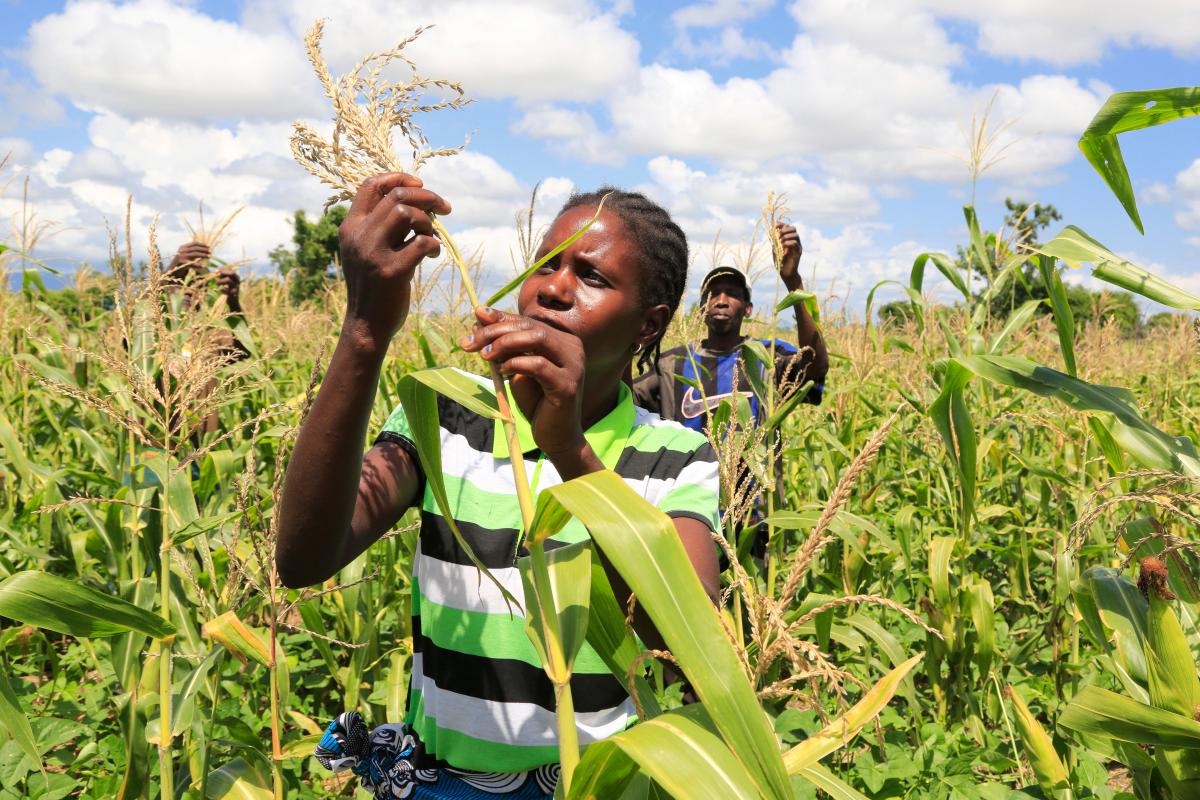Blog: A global outlook on land health
By Jonathan Davies. Healthy soils, rich in biodiversity, are the foundation of life on earth. They sustain all other life on land, support food production, regulate water supplies, and capture atmospheric carbon that would otherwise contribute to climate change. As we have been reminded by the latest Global Land Outlook launched by the United Nations Convention to Combat Desertification, as much as forty percent of all land on earth may be degraded, further compromising the vital services to society.

Photo: ©ADPP
Whilst agriculture is the leading driver of land degradation and the greatest threat to biodiversity, the sector depends on healthy land and biodiversity for its own future. Farmers and businesses are increasingly aware of the importance of restoring land health and managing biodiversity sustainably in order to maintain the resilience and productivity of food systems. This knowledge is driving a behavioral shift of many stakeholders, away from mining soil as a non-renewable resource and more towards maintaining soil health through agro-ecological and regenerative farming practices.
IUCN’s 2020 report ‘Common Ground: Restoring Land Health for Sustainable Agriculture’ debunks the myth that nature conservation and global food production are a zero-sum game. The report shows that conserving living, biodiverse soils and landscapes can boost yields while helping both nature and society. The report clearly identifies common ground and joint aims for farmers and conservationists that can help secure the future of agriculture itself. IUCN is implementing the ‘Common Ground Dialogues’ between agriculture and conservation actors in the public, private and non-government sectors in order to focus attention on areas of consensus where action for sustainable agriculture can be accelerated.
IUCN promotes sustainable agriculture in line with the ‘Three Global Conditions’ published by Locke et al. (2019). This framework differentiates between intensively (roughly 30%) and extensively (70%) farmed land. IUCN supports the draft CBD Target 10 (ensuring that all areas under agriculture are managed sustainably), which can be achieved by ensuring that all agricultural land is managed to conserve and restore land health, in line with the indicators of Land Degradation Neutrality as established by UNCCD[1]. This will require differentiated solutions for land according to the intensity of its management and will necessitate significant scale up of recognised regenerative and agro-ecological approaches.
Sustainably managed agricultural lands can also make a major contribution to the proposed CBD target of conserving 30% of the planet’s land area by 2030. Farmers and other food system actors are central partners in this endeavour and they should be rewarded for their contributions to achieving targets for conserving biodiversity and sustainably managing land.
The upcoming UNCCD COP15 in Abidjan (9 to 20 May 2022) provides a further opportunity to strengthen global action for sustainable land management. It is an opportunity to push for significant increase in the area of land under agroecological and regenerative approaches and other recognised nature-positive approaches. IUCN will demonstrate the role of Nature-based Solutions in achieving Land Degradation Neutrality (LDN) and will promote commitment and action for rangeland restoration.
Our contribution to the negotiations builds on our work with Indigenous People Organisations, women’s organizations, the private sector and Civil Society Organisations to deliver LDN targets. IUCN’s engagement in the UNCCD CoP is coordinated with our influence of other international agreements, particularly to promote synergy between the Rio Conventions. The IUCN position paper at the UNCCD CoP is available from this webpage.
Blog written by Jonathan Davies, IUCN Senior Agriculture Advisor
***
[1] These indicators are land cover (physical land cover class), land productivity (net primary productivity) and carbon stocks (soil organic carbon stocks)
